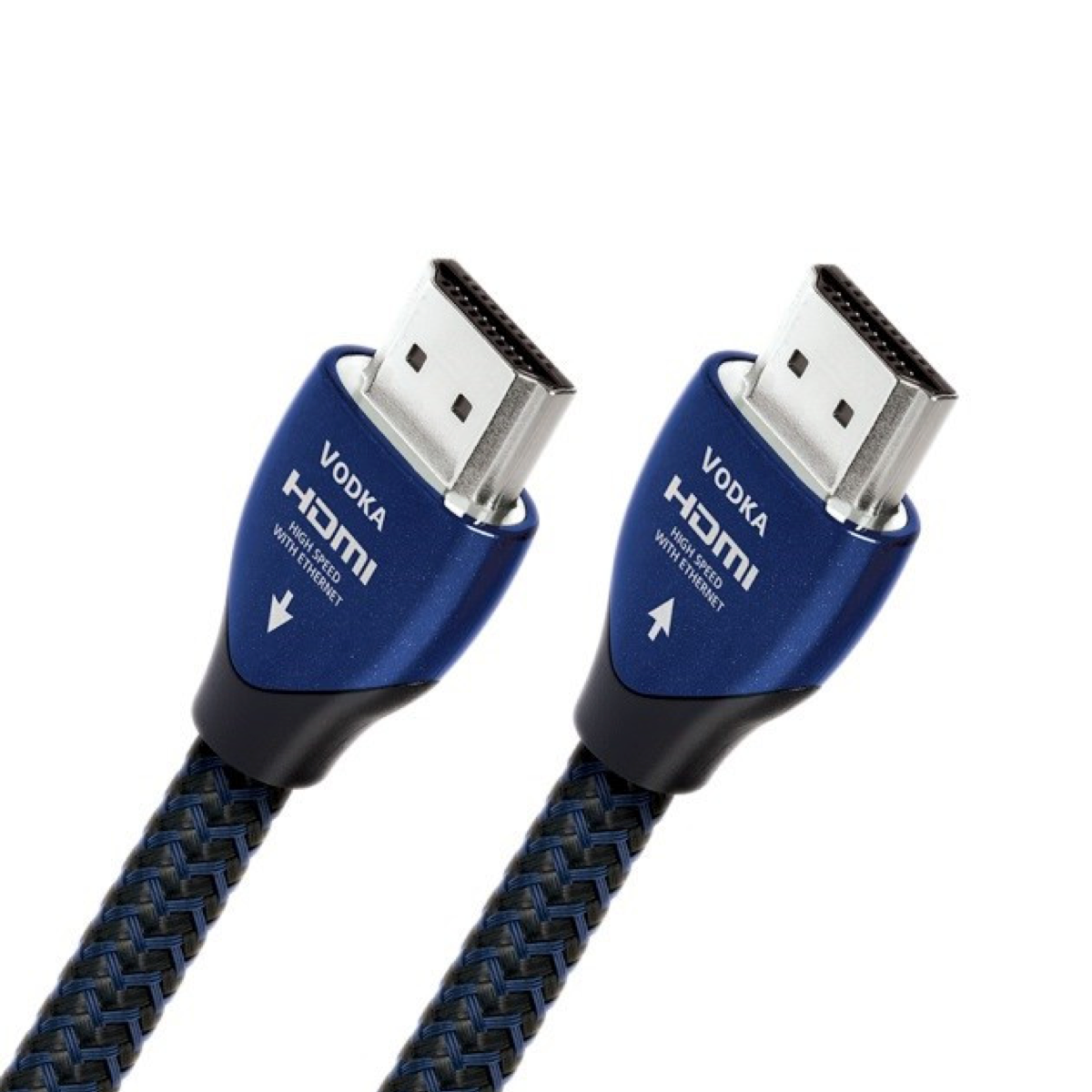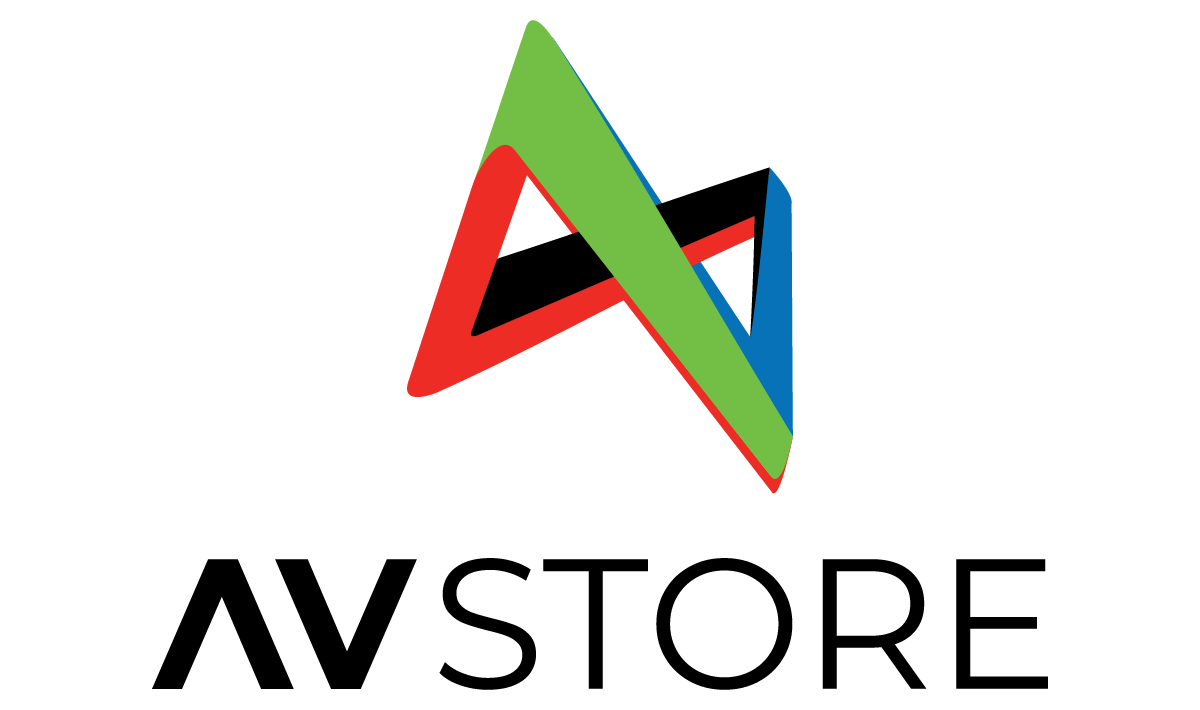

AudioQuest Vodka - 4K HDMI Cable
Includes GST of Rs. 4,210

GET GST INPUT
Ever wondered why speakers, amplifiers, projectors etc. come with a slightly heftier price tag in India compared to their overseas counterparts? Well, part of the answer lies in our country's Goods & Services Tax (GST).
But here's the kicker: Don't let that GST input slip through your fingers! Especially when some of the products we supply carry a GST rate of 18% and 28%.
At AVStore, we provide you with a GST compliant invoice for every purchase.
Simply put in your GST number during the checkout to avail an offset.

- Description
- Specifications
- Reviews
AUDIOQUEST VODKA 4K HDMI Cable
Vodka HDMI adds 10% silver-plating to its predecessors' solid-core conductors. Like all AudioQuest HDMI cables, Vodka uses Solid High-Density Polyethylene Insulation, and precise geometry. Specific attention has been paid to maximizing the performance of HDMI, and indeed, AudioQuest's HDMI cables push sonic performance to new levels.
SOLID 10% SILVER CONDUCTORS
Solid conductors eliminate strand-interaction distortion and reduce jitter. Solid silver-plated conductors are excellent for very high-frequency applications, like HDMI audio and video. These signals, being such a high frequency, travel almost exclusively on the surface of the conductor. As the surface is made of high-purity silver, the performance is very close to that of a solid silver cable, but priced much closer to solid copper cable. This is an incredibly cost effective way of manufacturing very high-quality HDMI cables.
HARD-CELL FOAM INSULATION
Hard-Cell Foam (HCF) Insulation ensures critical signal-pair geometry. Any solid material adjacent to a conductor is actually part of an imperfect circuit. Wire insulation and circuit board materials all absorb energy. Some of this energy is stored and then released as distortion. Hard-Cell Foam Insulation is similar to the Foamed-PE used in our more affordable Bridges & Falls cables, and is nitrogen-injected to create air pockets. Because nitrogen (like air) does not absorb energy and therefore does not release any energy from or into the conductor, distortion is reduced. In addition, the stiffness of the material allows the cable's conductors to maintain a stable relationship along the cable's full length, producing a stable impedance character and further minimizing distortion.
HIGH SPEED DATA CAPACITY
HDMI standards and capabilities have improved significantly since DVI first evolved into HDMI. All generations are backward compatible. However, not all previous HDMI cables can transmit the full 18Gbps of data required to optimize today’s HDMI 2.0 equipment. While there is currently no 4K/60 4:4:4 software requiring the full 18Gbps capability of HDMI, some sources (UHD Blu-ray players) can be set to “up-sample”, requiring 18Gbps capability. Up-sampling often should be done in the TV rather than in a previous component — but that’s your decision. AudioQuest HDMI cables with "Exceeds 18 G bps" on the box front are guaranteed to exceed the requirements for all possible HDMI data streams.
CARBON-BASED 3-LAYER NOISE-DISSIPATION SYSTEM (NDS)
It's easy to accomplish 100% shield coverage. Preventing captured Radio Frequency Interference (RFI) from modulating the equipment's ground reference requires AQ's Noise-Dissipation System (NDS). Traditional shield systems typically absorb and then drain noise/RF energy to component ground, modulating and distorting the critical "reference" ground plane, which in turn causes a distortion of the signal. NDS's alternating layers of metal and carbon-loaded synthetics "shield the shield," absorbing and reflecting most of this noise/RF energy before it reaches the layer attached to ground.
DIRECTIONALITY
All drawn metal strands or conductors have a non-symmetrical, and therefore directional, grain structure. AudioQuest controls the resulting RF impedance variation so that noise is drained away from where it will cause distortion. The correct direction is determined by listening to every batch of metal conductors used in every AudioQuest audio cable. When applicable, arrows are clearly marked on the connectors to ensure superior sound quality. For most models of AQ cable, the arrows not only indicate the direction that optimizes metal-directionality as part of Noise-Dissipation, but also indicates non-symmetrical attachment of shield and GND in order to optimize full-system performance.
AUDIOQUEST VODKA 4K HDMI Cable
Vodka HDMI adds 10% silver-plating to its predecessors' solid-core conductors. Like all AudioQuest HDMI cables, Vodka uses Solid High-Density Polyethylene Insulation, and precise geometry. Specific attention has been paid to maximizing the performance of HDMI, and indeed, AudioQuest's HDMI cables push sonic performance to new levels.
SOLID 10% SILVER CONDUCTORS
Solid conductors eliminate strand-interaction distortion and reduce jitter. Solid silver-plated conductors are excellent for very high-frequency applications, like HDMI audio and video. These signals, being such a high frequency, travel almost exclusively on the surface of the conductor. As the surface is made of high-purity silver, the performance is very close to that of a solid silver cable, but priced much closer to solid copper cable. This is an incredibly cost effective way of manufacturing very high-quality HDMI cables.
HARD-CELL FOAM INSULATION
Hard-Cell Foam (HCF) Insulation ensures critical signal-pair geometry. Any solid material adjacent to a conductor is actually part of an imperfect circuit. Wire insulation and circuit board materials all absorb energy. Some of this energy is stored and then released as distortion. Hard-Cell Foam Insulation is similar to the Foamed-PE used in our more affordable Bridges & Falls cables, and is nitrogen-injected to create air pockets. Because nitrogen (like air) does not absorb energy and therefore does not release any energy from or into the conductor, distortion is reduced. In addition, the stiffness of the material allows the cable's conductors to maintain a stable relationship along the cable's full length, producing a stable impedance character and further minimizing distortion.
HIGH SPEED DATA CAPACITY
HDMI standards and capabilities have improved significantly since DVI first evolved into HDMI. All generations are backward compatible. However, not all previous HDMI cables can transmit the full 18Gbps of data required to optimize today’s HDMI 2.0 equipment. While there is currently no 4K/60 4:4:4 software requiring the full 18Gbps capability of HDMI, some sources (UHD Blu-ray players) can be set to “up-sample”, requiring 18Gbps capability. Up-sampling often should be done in the TV rather than in a previous component — but that’s your decision. AudioQuest HDMI cables with "Exceeds 18 G bps" on the box front are guaranteed to exceed the requirements for all possible HDMI data streams.
CARBON-BASED 3-LAYER NOISE-DISSIPATION SYSTEM (NDS)
It's easy to accomplish 100% shield coverage. Preventing captured Radio Frequency Interference (RFI) from modulating the equipment's ground reference requires AQ's Noise-Dissipation System (NDS). Traditional shield systems typically absorb and then drain noise/RF energy to component ground, modulating and distorting the critical "reference" ground plane, which in turn causes a distortion of the signal. NDS's alternating layers of metal and carbon-loaded synthetics "shield the shield," absorbing and reflecting most of this noise/RF energy before it reaches the layer attached to ground.
DIRECTIONALITY
All drawn metal strands or conductors have a non-symmetrical, and therefore directional, grain structure. AudioQuest controls the resulting RF impedance variation so that noise is drained away from where it will cause distortion. The correct direction is determined by listening to every batch of metal conductors used in every AudioQuest audio cable. When applicable, arrows are clearly marked on the connectors to ensure superior sound quality. For most models of AQ cable, the arrows not only indicate the direction that optimizes metal-directionality as part of Noise-Dissipation, but also indicates non-symmetrical attachment of shield and GND in order to optimize full-system performance.
